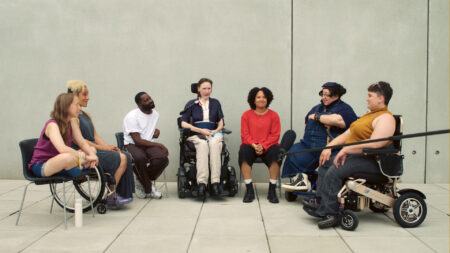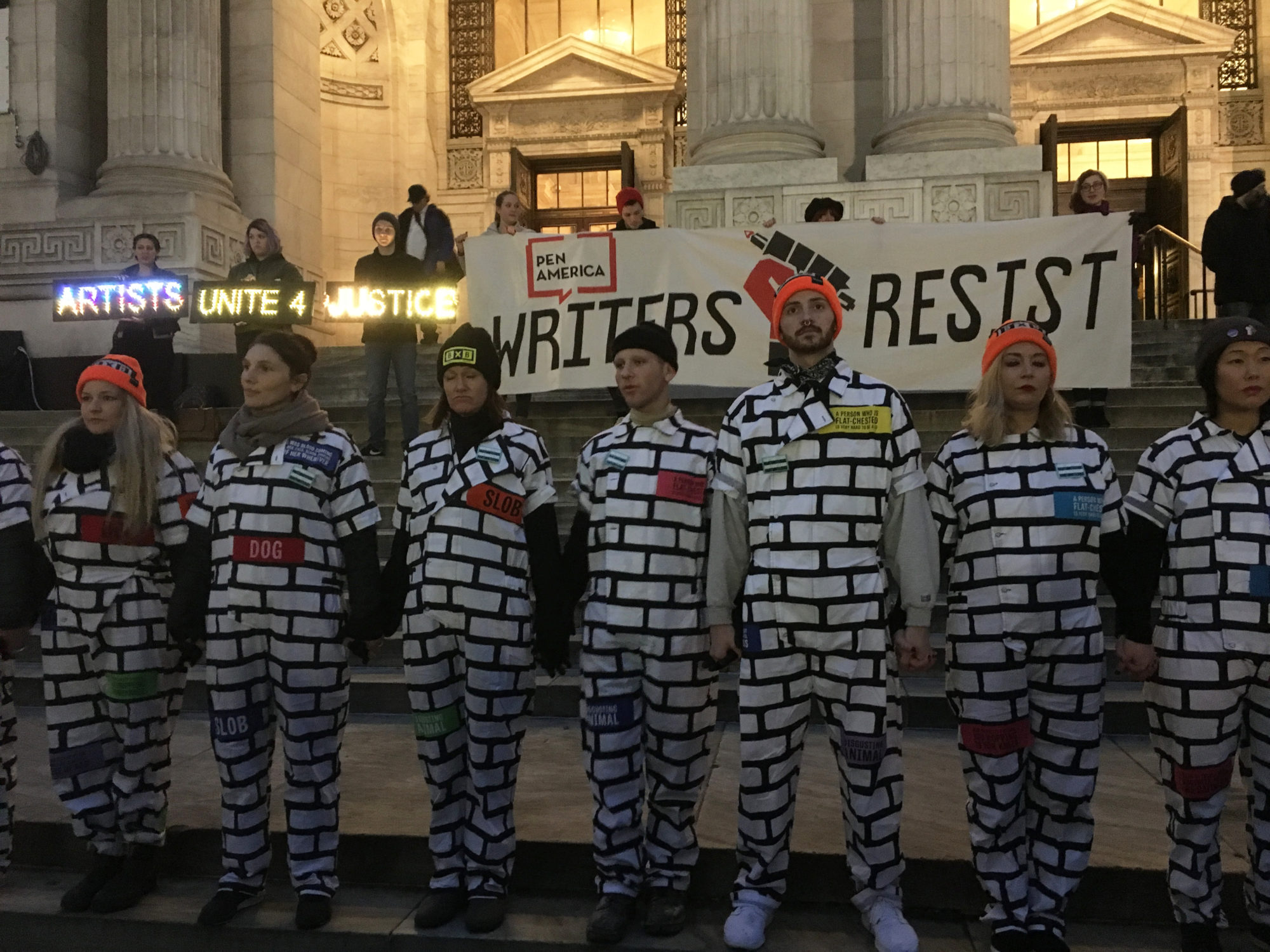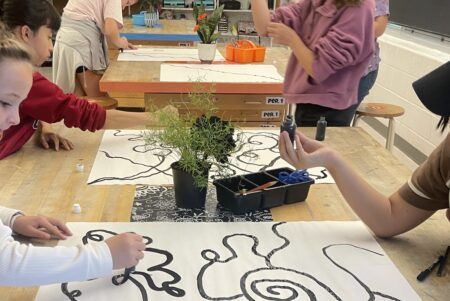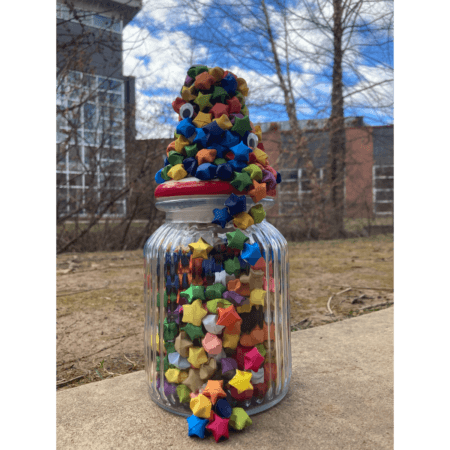Teaching with Contemporary Art
Communicating en Masse: The Art of Activism
Over the past year, many of us have gathered in kitchens, living rooms, and common spaces to make art for protests. Sharpies have been scrawled across cardboard, pink and magenta yarn has been sewn into pussy hats, and the more ambitious have made synchronized costumes and large-scale puppets. All of these protest-art objects have added new visuals to public spaces, combining political savvy with creativity to make instantaneous messages. Like at a potluck dinner, there’s often a sense of community, with each participant expressing solidarity and bringing something unique to the conversation. It is clear that the protest art in public spaces is corresponding with greater sensitivity to the community and country in which it is made. At this time, as the temperature of political discourse rises to untenable levels, it is vital for artists, educators, and cultural institutions to publicly engage with social and political issues.
Some artists have made protest art that fits well into politically charged public spaces. Marilyn Minter, for example, best known for her provocative paintings and videos of women, fashion, and food, created a series of buttons in support of Planned Parenthood that boldly stated, “Don’t fuck with us, don’t fuck without us.” Created in advance of Donald Trump’s inauguration, Shepard Fairey’s We the People posters featured his iconic style of portraiture; protesters could download and print free versions of the images or buy copies of the Washington Post or New York Times, where the artist featured these works in full-page advertisements. These artists and many more create work that has value beyond concept and commodity, it is accessible, and it is useful for communicating en masse.
Addressing protest art in the classroom can be tricky, since much of it takes too firm a stance in a profession that expects political neutrality from educators. But there’s definitely space in the classroom for studying activist art. For example, the politically charged work of Tania Bruguera is often implemented in public spaces. Her work can take the form of voting, in the case of Referendum, or a social service, like Immigrant Movement International. No matter the country where Bruguera exhibits her work, she nudges the local status quo and tests the boundaries for what’s ideologically acceptable. Truth Booth, the ongoing work of the group known as Cause Collective, invites viewers to participate in a video recording, in which they finish the sentence, “The truth is…” This nationally and internationally exhibited participatory work delicately combines the intimate and the public. Finally there are artists like Ai Weiwei, whose work can be beautiful and heart-wrenching at the same time. A student once asked me what medium Ai Weiwei was most known for working with, and I had to think for a moment before finally saying, “Conflict. His medium is conflict.”
By including activist artwork in the curriculum, educators can present opportunities for teachable moments and socially relevant discussions. But talking about concepts raised by activist art is a far cry from attending a protest and feeling the mix of catharsis and relief when amongst so many allies. Despite persistent student interest in participating in and organizing protests, engaging in this type of political activity with their students would be out of the question for most educators. Inevitably, teachers learn the political inclinations of their students, and over the years one gleans the political trends of the community where one teaches.
It became clear to me that teaching about activism in public spaces was a good start, but my students needed more. Their interests surpassed what I was able to teach inside the school; they needed a new mode in which to learn and engage with political topics, on their own terms. The young will inherit the problems that older generations create or fail to solve, but young voices are too often absent from conversations regarding governance. I strove to create a situation that blended activism and protest art, one that would allow students to engage with political ideas and develop stances rooted in their life experiences. My wife and creative partner, Miranda Kozak, and I collaborated to create Citizens of Earth. This work is a social sculpture, performed in public spaces, meant to give young people a platform to grapple with issues surrounding immigration and ancestry in American culture. Upon interacting with the piece, participants are encouraged to share their personal stories through the creation of a small global passport. My students were invited to work the piece as “diplomats,” to engage the public in conversations about their national and ethnic histories. The work itself is a verbal exchange between participants, who share their personal stories and often develop more nuanced ideas after experiencing the work. If the participants wished, the diplomats would create a small “global passport” for them, representing their “official” documentation as a citizen of the planet. More than anything, Citizens of Earth revolves around the question of how the world would be different, and how we would view each other, if we all held the same passport.
To date, I’ve presented Citizens of Earth with my students three times in New York City; our most recent venue was Flushing Meadows Corona Park, in conjunction with the Queens Museum and the nonprofit ArtBuilt. Since the piece is performed in public, everyone can participate, and all participation is transparent to all witnesses; the work implies that political discourse should not remain behind closed doors in private spaces but rather be open for scrutiny in public spaces.
Artists and educators owe each other the opportunity to re-examine what it means to be allies and active members of our communities. This can happen by featuring new artists and new ideas in our curricula; it can also take the form of including students in specialized extracurricular work that gives them a space to test out ideas on their own. If a school is home to students that belong to groups that the current administration is demonizing or threatening to deport, it is crucial to show students how to engage in civil political discourse that will make them more engaged citizens of our country and our Earth.







